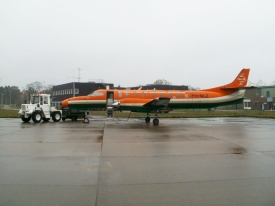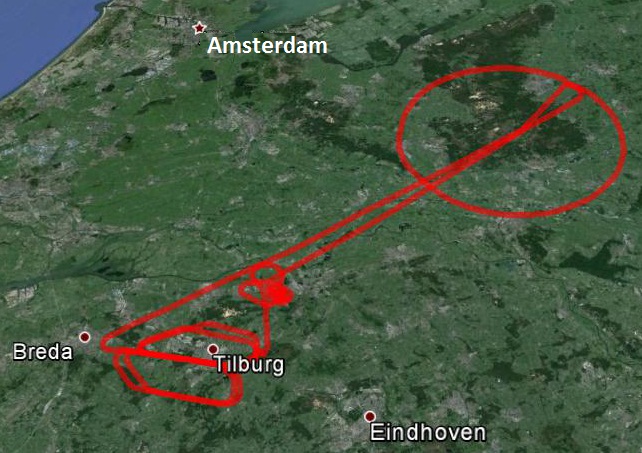
NLR Swearingen Metro used for Galileo flight test
ESA’s Galileo satellites have achieved their very first aerial fix of longitude, latitude and altitude, enabling the in-flight tracking of a test aircraft. ESA’s four Galileo satellites in orbit have supported months of ground-based positioning tests across Europe since the very first Galileo positioning fix occurred back in March. Now the very first Galileo-based aerial tracking has taken place, marking the first time ever that Europe has been able to determine the position on an aircraft using only its own independent navigation system. This historic milestone took place from a Fairchild Metro-II above Gilze-Rijen Air Force Base in the Netherlands at 13:38 CET on 12 November.It came as part of an aerial test campaign overseen jointly by ESA and the National Aerospace Laboratory of the Netherlands, NLR, with the support of Eurocontrol, the European Organisation for the Safety of Air Navigation, and LVNL, the Dutch Air Navigation Service Provider. The campaign ran from 11 -Â 15 November. A pair of Galileo Test User Receivers were used aboard the aircraft, the same kind of receivers currently employed for Galileo testing in the field and in labs across Europe. These receivers were connected to an aeronautical-certified triple frequency Galileo-ready antenna mounted on top of the aircraft. Aerial tests were scheduled during periods when all four Galileo satellites were visible in the sky, four being the minimum needed to perform positioning fixes. The receivers fixed the aircraft position using signals from both Galileo’s Open Service (OS) and the Public Regulated Service (PRS), as well as determining key variables such as the Position, Velocity and Timing accuracy, time to first fix, signal to noise ratio, range error and range rate error.
Test flight plans were developed by NLR in collaboration with ESA and LVNLÂ and covered all major flight phases: take off, straight and level flight with constant speed, orbit, straight and level flight with alternating speeds, turns with a maximum bank angle of 60 degrees, pull-ups and push-overs, approaches and landings. They also allowed positioning to be carried out during a wide variety of dynamic conditions, such as vibrations, speeds up to 456 Km/h, accelerations up to 2g horizontal, accelerations from 0.5g to 1.5g vertical, and high jerks. The maximum altitude reached during the flights was 3000m. NLR’s Fairchild Metro-II used during testing is something of a satnav veteran, having previously performed initial European GPS testing back in the 1980s and the first tests of the European Geostationary Navigation Overlay Service, EGNOS, which sharpens GPS accuracy and monitors its reliability over Europe for high-accuracy or even safety-of-life uses.
The definition phase and the development of the in-orbit validation phase of the Galileo programme were carried out by ESA and co-funded by ESA and the European Union. The Full Operational Capability phase is managed and fully funded by the European Commission. The Commission and ESA have signed a delegation agreement by which ESA acts as design and procurement agent on behalf of the Commission.
Also visit our satellite navigation capabilities page.

World first airborne positioning fix with Galileo


